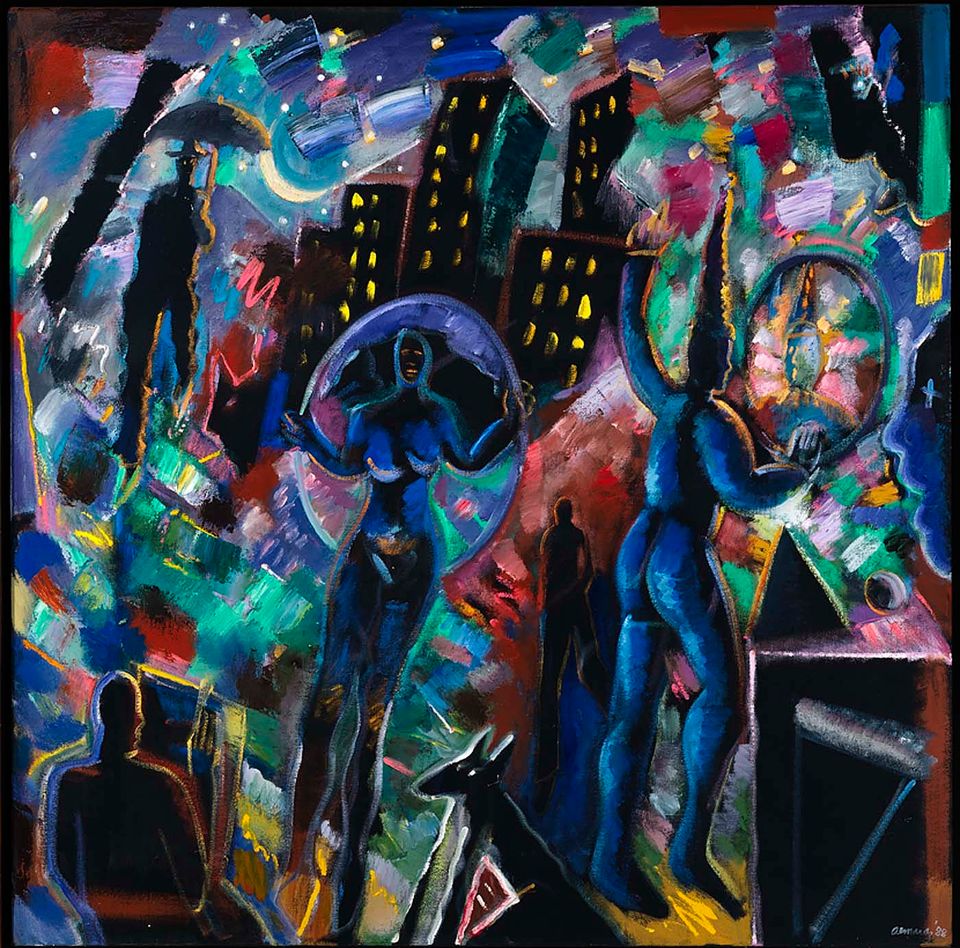Artwork Details
- Title
- No Parking Here Any Time
- Artist
- Date
- 1978
- Location
- Not on view
- Dimensions
- 48 x 36 in. (121.9 x 91.4 cm)
- Copyright
- © 1978, Luis Cruz Azaceta
- Credit Line
- Gift of Sharon Jacques
- Mediums Description
- acrylic on canvas
- Classifications
- Subjects
- Figure — fragment — head
- Object — other — sign
- State of being — death
- Figure group
- Object Number
- 2013.42
Artwork Description
Our America: The Latino Presence in American Art, 2013
Las pinturas que el mismo Azaceta describe como “pop apocalíptico” son alegorías de un período sombrío en la historia de la ciudad de Nueva York. Sus imágenes caricaturescas más producto de una pesadilla que de la realidad, incitan a los espectadores a enfrentar la violencia como instigadora del sufrimiento humano. El título inhóspito —No Parking Here Any Time— también expresa los sentimientos de alienamiento del artista luego de partir de Cuba.
Nuestra América: la presencia latina en el arte estadounidense, 2013















